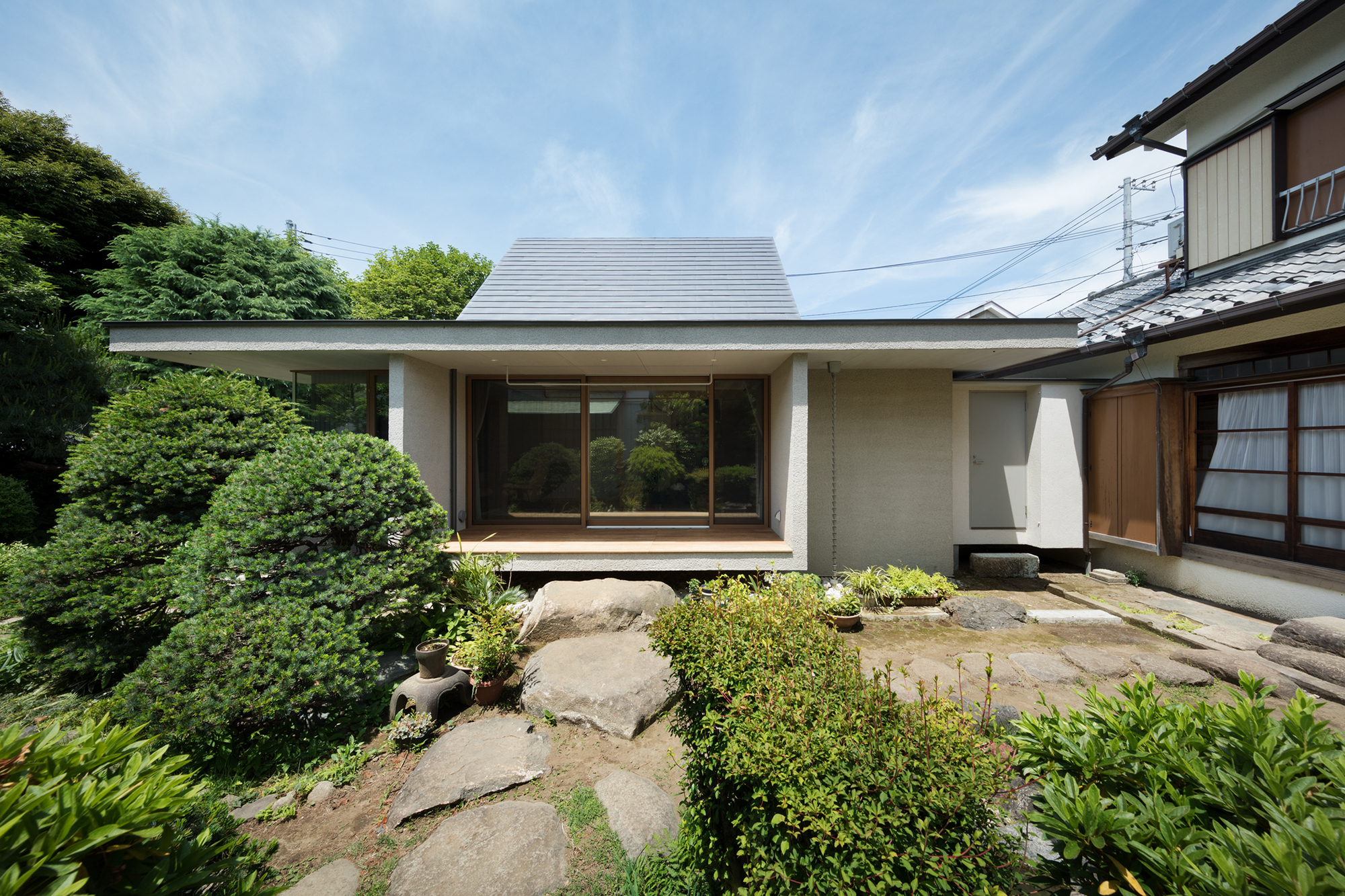Modern Japanese gable roof houses, while rooted in tradition, often feature unique features that blend traditional design elements with contemporary aesthetics and functionality. Here are some of the distinctive features of modern Japanese gable roof houses:

- Sleek and Minimalist Design: Modern Japanese gable roof houses typically embrace a sleek and minimalist design aesthetic, characterized by clean lines, geometric forms, and a simple color palette. The focus is on creating a sense of spaciousness and tranquility, with minimal ornamentation and clutter-free interiors.
- Integration of Natural Materials: While modern Japanese gable roof houses may incorporate contemporary materials such as steel and glass, they often feature natural materials like wood and stone to create a sense of warmth and connection to nature. Exposed timber beams, cedar siding, and stone accents are common features that add texture and visual interest to the exterior facade.
- Large Windows and Sliding Doors: To maximize natural light and views of the surrounding landscape, modern Japanese gable roof houses often feature large windows and sliding glass doors. These expansive openings blur the boundaries between indoor and outdoor spaces, creating a seamless transition and a strong connection to the natural environment.
- Flexible Floor Plans: Modern Japanese gable roof houses often feature flexible floor plans that can be adapted to suit the changing needs of the residents. Open-concept living areas with sliding partitions or shoji screens allow for versatile use of space, while multipurpose rooms can serve as home offices, guest quarters, or entertainment areas as needed.
- Efficient Use of Space: Given the limited space available in urban areas, modern Japanese gable roof houses prioritize efficient use of space both indoors and outdoors. Built-in storage solutions, such as tatami benches with hidden compartments or sliding panels that conceal storage alcoves, help to maximize usable space while maintaining a clean and uncluttered appearance.
- Integration of Traditional Elements: While modern Japanese gable roof houses embrace contemporary design principles, they often incorporate traditional elements such as engawa (verandas), genkan (entryway), and tatami mats to evoke a sense of cultural heritage and authenticity. These traditional features add character and charm to the home while honoring Japan’s architectural legacy.
- Energy-Efficient Design: With a growing emphasis on sustainability and energy efficiency, modern Japanese gable roof houses often incorporate passive design strategies to reduce energy consumption and minimize environmental impact. Features such as high-performance insulation, natural ventilation systems, and solar panels help to optimize thermal comfort and reduce reliance on fossil fuels.
- Integration of Technology: To enhance comfort and convenience, modern Japanese gable roof houses may incorporate smart home technology and automation systems. From energy-efficient appliances and HVAC systems to integrated lighting and security systems, these technological features improve the overall livability of the home while aligning with contemporary lifestyle trends.
- Harmony with Nature: One of the defining features of modern Japanese gable roof houses is their harmonious relationship with nature. Whether nestled in a rural setting or integrated into an urban landscape, these homes often feature landscaped gardens, rooftop terraces, or indoor-outdoor living spaces that celebrate the beauty of the natural world and promote a sense of well-being.
- Customization and Personalization: While modern Japanese gable roof houses share common design principles, they also offer opportunities for customization and personalization to reflect the unique preferences and lifestyles of the homeowners. From custom-built furniture and architectural details to curated artwork and decor, these personalized touches add character and individuality to the home, creating a truly unique living environment.



